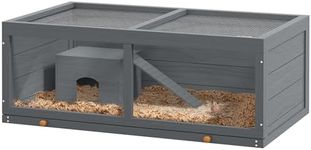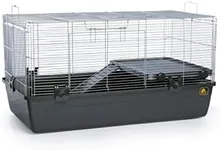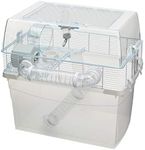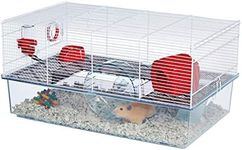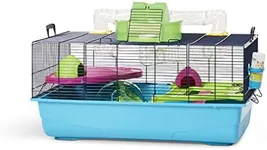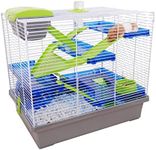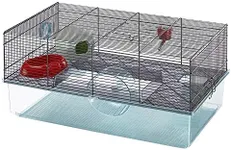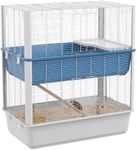Buying Guide for the Best Hamster Cages
Choosing the right hamster cage is essential for your pet’s health, happiness, and safety. A good cage provides enough space for exercise, proper ventilation, and a secure environment to prevent escapes. When shopping for a hamster cage, it’s important to consider your hamster’s species, activity level, and your available space at home. Understanding the key features will help you make a choice that keeps your hamster comfortable and makes maintenance easier for you.Cage SizeCage size refers to the overall dimensions and floor space available for your hamster to move around. This is important because hamsters are active animals that need room to explore, burrow, and exercise. Cages come in various sizes, from small enclosures suitable only for temporary housing to large habitats that allow for more enrichment. Generally, the bigger the cage, the better for your hamster’s well-being. If you have a Syrian hamster, opt for a larger cage, as they need more space than dwarf hamsters. Always choose a cage that provides ample room for toys, tunnels, and a wheel, considering your available space at home.
Bar SpacingBar spacing is the distance between the bars of a wire cage. This is crucial because if the bars are too far apart, your hamster might squeeze through and escape or get stuck. For dwarf hamsters, the spacing should be narrower, while Syrian hamsters can handle slightly wider gaps. When choosing, check the recommended bar spacing for your hamster’s species and make sure it’s small enough to prevent escapes but wide enough for good airflow.
VentilationVentilation refers to how well air circulates within the cage. Good ventilation prevents the buildup of moisture and odors, keeping your hamster healthy. Wire cages offer excellent airflow, while plastic or glass cages may need extra attention to ensure they don’t get stuffy. If you choose a tank-style cage, look for a secure mesh lid or ventilation holes. Pick a cage that allows fresh air to flow freely, especially if your home is warm or humid.
Ease of CleaningEase of cleaning is about how simple it is to maintain the cage and keep it hygienic. Hamsters are sensitive to dirty environments, so regular cleaning is a must. Some cages have removable bases or trays, while others have multiple access points for easy reach. When comparing cages, think about how quickly you can remove bedding, clean surfaces, and reassemble the cage. Choose a design that makes cleaning straightforward, especially if you have limited time.
Security and DurabilitySecurity and durability refer to how well the cage keeps your hamster safe and how long it will last. A secure cage prevents escapes and protects your pet from other household animals. Durable materials like sturdy plastic, metal, or glass ensure the cage won’t break or wear out quickly. Check for strong locks, solid construction, and chew-proof features. If your hamster is a known escape artist or chewer, prioritize cages with reinforced doors and tough materials.
Expandability and AccessoriesExpandability and accessories relate to how easily you can add tunnels, platforms, or toys to the cage. Some cages are modular, allowing you to connect extra tubes or sections as your hamster’s needs change. Accessories like wheels, hideouts, and climbing structures provide enrichment and prevent boredom. When choosing, consider whether you want the option to expand the habitat or customize it with different accessories. Pick a cage that supports your plans for enrichment and play.

